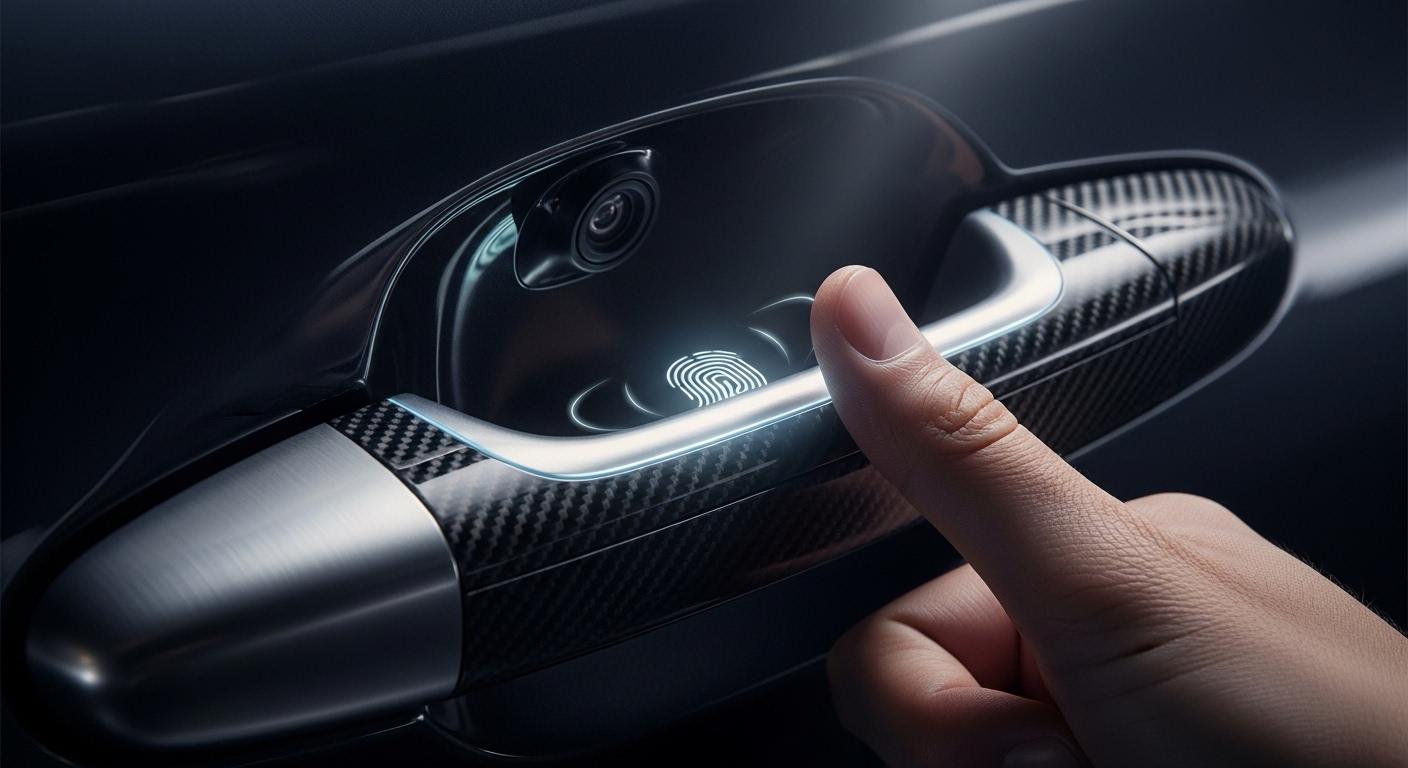Biometric Vehicle Access: The Future of Car Security
The convergence of automotive engineering and biometric technology is ushering in a new era of vehicle security. Gone are the days when a simple key fob was enough to protect your prized possession. Today, cutting-edge biometric systems are revolutionizing how we interact with our vehicles, offering unprecedented levels of security and personalization. From fingerprint scanners to facial recognition, these advanced technologies are not just enhancing safety but also transforming the entire driving experience. Let's delve into the world of biometric vehicle access and explore how it's reshaping the automotive landscape.

The need for more robust security measures led to the exploration of biometric technologies in the automotive sector. Biometrics, which use unique physical characteristics for identification, offered a promising solution to the vulnerabilities of traditional key-based systems. The first implementations of biometric technology in cars were relatively simple, such as fingerprint sensors for starting the engine. However, as the technology matured, its applications in vehicles expanded rapidly.
Understanding Biometric Vehicle Access
Biometric vehicle access systems use physiological or behavioral characteristics to identify and authenticate users. These systems can include fingerprint recognition, facial recognition, retinal scanning, voice recognition, or even gait analysis. The core principle is to use unique, difficult-to-replicate biological traits as a means of verifying identity and granting access to vehicle functions.
One of the key advantages of biometric systems is their ability to provide multi-factor authentication. For instance, a car might require both a fingerprint and a facial scan to start the engine, significantly reducing the risk of unauthorized access. Additionally, these systems can be integrated with traditional methods like key fobs or smartphone apps, creating layered security protocols that are extremely difficult to bypass.
Types of Biometric Systems in Vehicles
Fingerprint Recognition: This is perhaps the most common form of biometric authentication in vehicles. Fingerprint sensors can be integrated into door handles, steering wheels, or start buttons. They offer quick and reliable authentication, though they can be affected by dirt or moisture.
Facial Recognition: Cameras mounted on the vehicle’s exterior or interior can scan and verify the driver’s face. This technology is becoming increasingly sophisticated, able to work in various lighting conditions and even detect liveness to prevent spoofing attempts.
Retinal Scanning: While less common due to its complexity, retinal scanning offers extremely high security. It involves analyzing the unique patterns of blood vessels in the retina, which are nearly impossible to replicate.
Voice Recognition: This technology authenticates users based on their unique vocal characteristics. It can be particularly useful for hands-free operation and can be combined with natural language processing for voice commands.
Gait Analysis: Some advanced systems can recognize a person’s unique walking pattern as they approach the vehicle, providing a seamless and natural authentication process.
Benefits Beyond Security
While enhanced security is the primary benefit of biometric vehicle access, these systems offer several other advantages. Personalization is a key feature – once a user is authenticated, the vehicle can automatically adjust settings like seat position, mirror angles, climate control, and infotainment preferences. This level of customization enhances the driving experience and can be particularly useful in shared or fleet vehicles.
Biometric systems can also contribute to safety by ensuring that only authorized individuals can operate the vehicle. This can be especially valuable for parents of young drivers or for businesses managing company vehicles. Some systems can even monitor driver alertness by analyzing eye movements or facial expressions, potentially preventing accidents caused by drowsiness or distraction.
Challenges and Considerations
Despite their potential, biometric vehicle access systems face several challenges. Privacy concerns are at the forefront, as these systems collect and store sensitive biological data. Manufacturers must implement robust data protection measures to prevent breaches and unauthorized access to this information.
Reliability is another crucial factor. Biometric systems need to function consistently in various environmental conditions – extreme temperatures, bright sunlight, or complete darkness. False rejections (where the system fails to recognize an authorized user) can be frustrating and potentially dangerous in emergency situations.
There’s also the question of inclusivity. Some individuals may have physical characteristics that make certain biometric authentication methods difficult or impossible to use. For instance, fingerprint sensors may not work for those with certain skin conditions, while facial recognition could struggle with individuals wearing religious head coverings.
The Road Ahead
As biometric technology continues to advance, we can expect to see even more innovative applications in vehicles. Future systems might incorporate behavioral biometrics, analyzing patterns like how a person drives or interacts with the vehicle’s controls. Artificial intelligence and machine learning will play a crucial role in improving the accuracy and adaptability of these systems.
Integration with other emerging technologies is also on the horizon. For example, blockchain could be used to securely store and manage biometric data, while 5G networks could enable real-time authentication and personalization across multiple vehicles or even entire smart cities.
The automotive industry is at a crossroads, balancing the need for enhanced security with user convenience and privacy concerns. As biometric vehicle access systems become more prevalent, they will undoubtedly reshape our relationship with our vehicles, turning them into highly personalized, secure extensions of our digital identities. The key to successful implementation will lie in striking the right balance between cutting-edge technology and user-centric design, ensuring that these systems enhance rather than complicate the driving experience.





